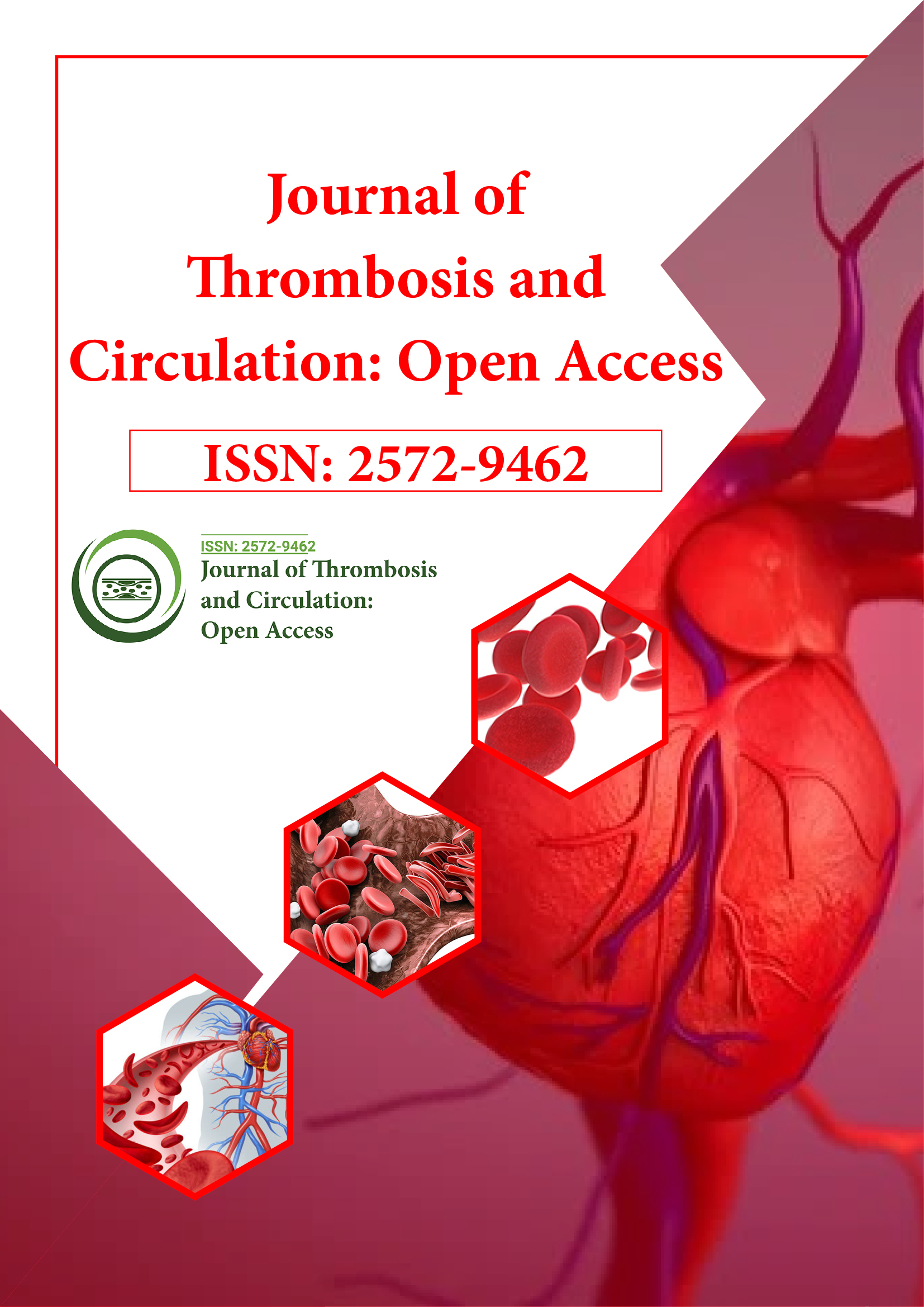Indexed In
- RefSeek
- Hamdard University
- EBSCO A-Z
- Publons
- Google Scholar
Useful Links
Share This Page
Journal Flyer

Open Access Journals
- Agri and Aquaculture
- Biochemistry
- Bioinformatics & Systems Biology
- Business & Management
- Chemistry
- Clinical Sciences
- Engineering
- Food & Nutrition
- General Science
- Genetics & Molecular Biology
- Immunology & Microbiology
- Medical Sciences
- Neuroscience & Psychology
- Nursing & Health Care
- Pharmaceutical Sciences
Perspective - (2023) Volume 9, Issue 3
Engineering Fibrinolytic Enzymes: Enhancing Efficacy and Safety in Clot-Busting Therapy
Turro Doroto*Received: 19-Apr-2023, Manuscript No. JTCOA-23-21490; Editor assigned: 21-Apr-2023, Pre QC No. JTCOA-23-21490 (PQ); Reviewed: 05-May-2023, QC No. JTCOA-23-21490; Revised: 12-May-2023, Manuscript No. JTCOA-23-21490 (R); Published: 22-May-2023, DOI: 10.35248/2572-9462.23.9.222
Description
Thrombolytic therapy, also known as clot-busting therapy, has revolutionized the treatment of various thrombotic disorders, including acute ischemic stroke and myocardial infarction. However, traditional thrombolytic agents, such as tissue Plasminogen Activators (tPAs), are associated with limitations, including bleeding complications and suboptimal clot specificity. In recent years, researchers have focused on developing novel thrombolytic strategies inspired by blood cells and targeted towards clots. These innovative approaches aim to improve the efficacy and safety of thrombolytic therapies.
Platelet-mimicking nanoparticles
Platelets play a crucial role in thrombus formation and stabilization. Inspired by the natural function of platelets, researchers have developed Platelet-Mimicking Nanoparticles (PMNPs) to enhance thrombolytic therapy. PMNPs consist of a biocompatible core surrounded by a lipid bilayer decorated with platelet-specific receptors, such as glycoprotein IIb/IIIa. These nanoparticles can selectively bind to activated platelets within the clot, facilitating the delivery of thrombolytic agents specifically to the site of thrombosis. PMNPs have shown promising results in preclinical studies, demonstrating enhanced clot targeting and reduced bleeding complications compared to traditional thrombolytic agents.
Fibrinolytic enzyme engineering
Fibrinolytic enzymes, such as tPAs, are commonly used for thrombolytic therapy. However, their short half-life and nonspecificity towards clots limit their effectiveness. Recent advancements in enzyme engineering have led to the development of modified fibrinolytic enzymes with improved properties. For instance, researchers have engineered tPA variants with extended half-life, enhanced stability, and increased clot specificity. These modified enzymes can more effectively dissolve clots while minimizing the risk of bleeding complications. Furthermore, targeted delivery systems, such as liposomes and nanoparticles, have been employed to enhance the localization of engineered enzymes at the site of thrombosis.
Synthetic peptide-based therapies
Synthetic peptides offer a promising avenue for clot-targeted thrombolytic therapy. Peptides can be designed to specifically bind to fibrin, the major component of blood clots, thereby increasing the clot specificity of thrombolytic agents. Peptidebased therapies can be used as standalone thrombolytic agents or as adjuncts to traditional thrombolytic drugs. Several peptidebased strategies have been investigated, including fibrin-binding peptides, clot-penetrating peptides, and clot-activatable peptides. These approaches aim to enhance the thrombolytic efficacy, reduce off-target effects, and improve the safety profile of thrombolytic therapies.
Ultrasound-assisted thrombolysis
Ultrasound has emerged as a potential adjunctive therapy for thrombolysis. When combined with thrombolytic agents, ultrasound can enhance clot dissolution by improving the delivery and penetration of thrombolytic agents into the clot. Ultrasound waves can induce mechanical disruption of the fibrin network, promoting the exposure of fibrin-bound plasminogen and enhancing the enzymatic action of thrombolytic agents. Moreover, microbubbles, which can act as cavitation nuclei, have been used in combination with ultrasound to further enhance clot disruption. Ultrasoundassisted thrombolysis has shown promising results in both preclinical and clinical studies, with improved recanalization rates and reduced hemorrhagic complications.
Gene-based thrombolytic therapies
Gene-based thrombolytic therapies have gained significant attention in recent years. These therapies involve the delivery of genetic material, such as DNA or RNA, to promote the production of thrombolytic agents directly at the site of thrombosis. One approach is the use of viral vectors to deliver genes encoding for fibrinolytic enzymes, such as tPA or Urokinase-Type Plasminogen Activator (uPA), to the site of the clot. Once inside the target cells, the viral vector integrates the genetic material, leading to the production of the desired thrombolytic agent.
Another gene-based strategy involves the use of non-viral vectors, such as nanoparticles or liposomes, to deliver the genetic material. These vectors can be designed to specifically target the cells within the clot, ensuring efficient uptake and expression of the therapeutic genes. Additionally, gene editing technologies, such as CRISPR-Cas9, hold promise for precise manipulation of genes involved in clot formation and dissolution, providing new avenues for targeted thrombolytic therapy.
Gene-based thrombolytic therapies offer several advantages over traditional approaches. By enabling local production of thrombolytic agents, these therapies can enhance clot specificity, minimizing the risk of systemic bleeding. Moreover, gene therapy can overcome the limitations associated with the short half-life of traditional thrombolytic agents, as continuous production of the therapeutic proteins can be achieved.
Clinical studies evaluating gene-based thrombolytic therapies are ongoing, and preliminary results are promising. These therapies have demonstrated improved clot dissolution and reduced bleeding complications in animal models. However, challenges such as the immune response to viral vectors and the efficient delivery of genetic material to target cells still need to be addressed before widespread clinical application.
Citation: Doroto T (2023) Engineering Fibrinolytic Enzymes: Enhancing Efficacy and Safety in Clot-Busting Therapy. J Thrombo Cir. 9:222.
Copyright: © 2023 Doroto T. This is an open-access article distributed under the terms of the Creative Commons Attribution License, which permits unrestricted use, distribution, and reproduction in any medium, provided the original author and source are credited.
